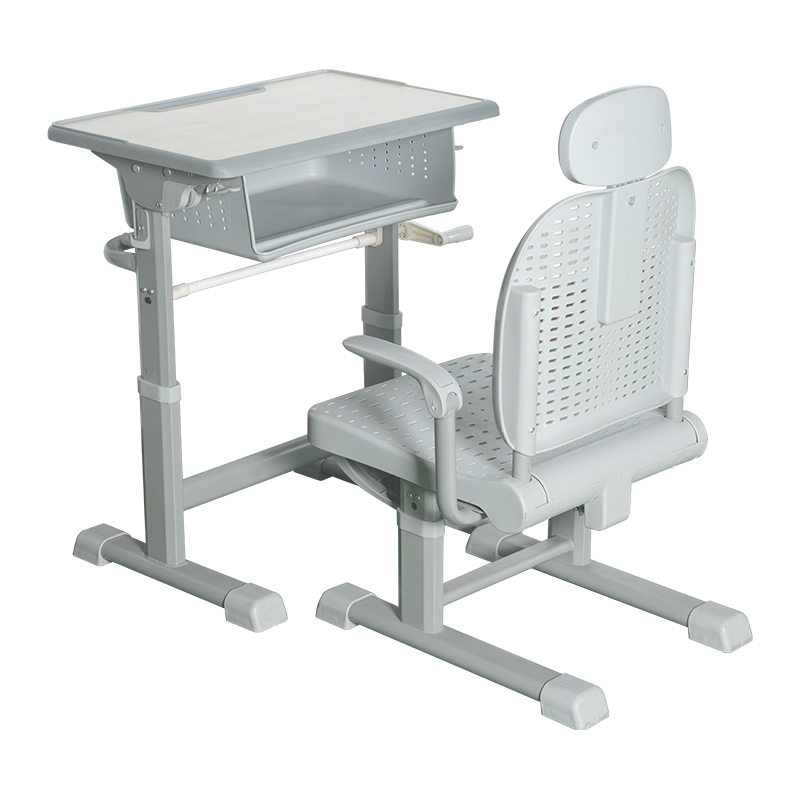One of the notable advantages of the school adjustable table and chair is its adaptability to various student heights and body types. With adjustable height mechanisms, each student can find a seating and working position that is ergonomically appropriate. This helps maintain proper posture, which in turn supports long-term musculoskeletal health and improved focus during learning activities. Whether for younger primary students or older secondary learners, the same set can often be customized to suit different users, reducing the need for grade-specific furniture.

Another important benefit is its potential to support a flexible learning environment. The school adjustable table and chair can easily be rearranged for group work, independent study, or classroom discussions. This allows teachers to quickly adjust seating arrangements without concern for uniformity, as every unit can be tailored individually. Such flexibility enhances classroom dynamics and encourages collaborative learning.
From a practical standpoint, the school adjustable table and chair is also a cost-effective choice for schools. With longer service life and the ability to accommodate multiple age groups, institutions can invest in fewer replacements over time. Additionally, many designs feature durable materials, easy maintenance, and lightweight construction, simplifying day-to-day use.
The school adjustable table and chair meets the evolving demands of education by combining ergonomic support, functional flexibility, and sustainable value for schools of all sizes.
Color Considerations of Compact Student Study Desk
The appearance of school furniture can significantly influence the atmosphere of a learning environment. Among the key visual elements, the color of compact student study desk plays a subtle yet meaningful role in shaping classroom ambiance, encouraging focus, and reflecting institutional identity. With increasing attention to aesthetics in educational settings, the choice of desk color is more than just decorative—it's part of a broader design strategy.
Neutral tones such as light gray, beige, and soft white remain popular choices for the color of compact student study desk. These colors are appreciated for their clean, modern look and their ability to blend well with a variety of classroom interiors. They create a calm and distraction-free environment, which is especially important in settings that require extended concentration, such as test centers or libraries. Neutral tones are also easy to maintain, as minor scuffs or dirt marks are less visible.
In contrast, more vibrant colors are often used in younger classroom settings. Bright blues, greens, and yellows can add a cheerful and inviting energy to the room. When thoughtfully applied, the color of compact student study desk can be used to encourage creativity and enthusiasm, helping to make the learning space more engaging for younger students. Some schools even use color coding to differentiate classroom levels or subjects, contributing to organization and easy navigation.
Another important factor in selecting the color of compact student study desk is how it interacts with lighting. Lighter shades can reflect more natural or artificial light, helping to brighten up the room, while darker colors like navy or charcoal offer a more grounded, serious tone suitable for high school or adult education environments.
The selected color should support the schools educational goals, whether that means promoting calm focus, encouraging creativity, or aligning with institutional branding. With an array of options available, choosing the right color of compact student study desk can subtly but effectively enhance the overall learning experience.


 English
English русский
русский Español
Español عربى
عربى
